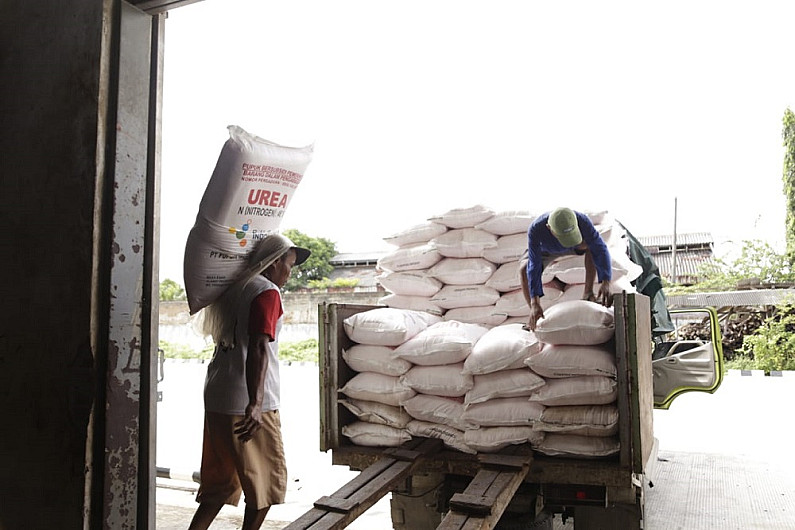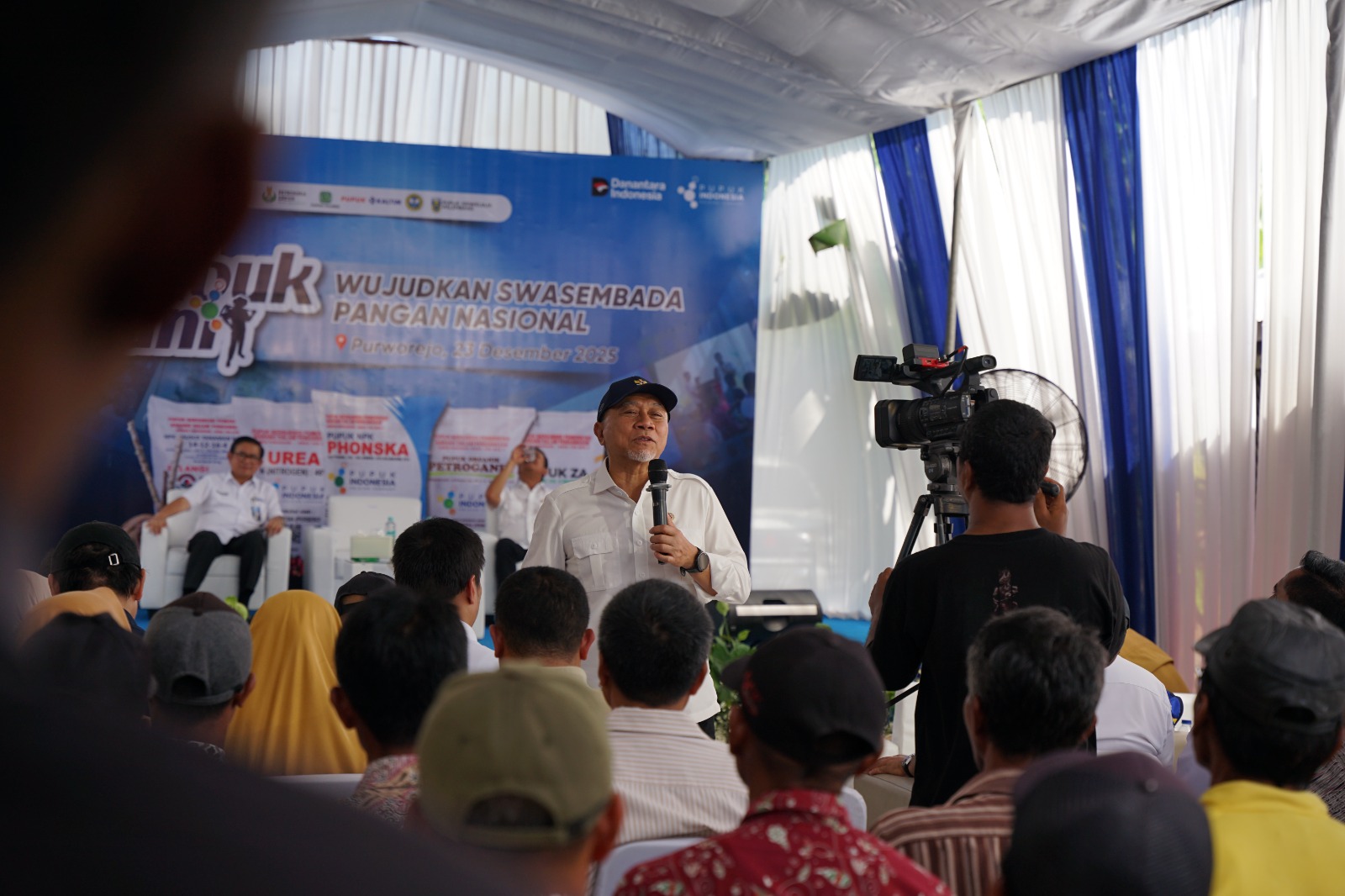Kapasitas Produksi Pupuk Indonesia 13,9 Juta Ton, Penuhi Kebutuhan Pupuk Subsidi Nasional

JAKARTA – PT Pupuk Indonesia (Persero) memiliki kapasitas produksi pupuk mencapai 13,9 juta ton, dengan rincian produksi urea sebesar 8,8 juta ton, NPK sebesar 3,8 juta ton, dan lainnya sekitar 1,3 juta ton. Kapasitas produksi ini telah mendukung ketersediaan pupuk subsidi dalam negeri.
SVP Sekretaris Perusahaan Pupuk Indonesia, Wijaya Laksana mengatakan bahwa alokasi pupuk bersubsidi ditetapkan sebesar 7,8 juta ton di tahun 2023. Dengan rincian pupuk jenis urea sebesar 4,6 juta ton dan NPK sebesar 3,2 juta ton. “Dengan kapasitas produksi 8,8 juta ton, kemampuan produksi kita untuk mencukup kebutuhan urea bersubsidi lebih dari cukup. Begitu juga dengan Pupuk NPK, dimana kemampuan produksi kita 3,5 juta ton, dengan kebutuhan NPK bersubsidi 3,2 juta ton,” demikian ungkap Wijaya di Jakarta, Senin (13/3/2023).
Hingga tanggal 11 Maret 2023, Pupuk Indonesia telah menyalurkan pupuk bersubsidi sebesar 1,50 juta ton dari Januari hingga 11 Maret 2023. Jumlah ini setara dengan 67% dari alokasi sampai dengan Maret 2023 sebesar 2,23 juta ton. Adapun total alokasi pupuk bersubsidi yang ditetapkan oleh pemerintah pada tahun 2023 sebesar 7,85 juta ton. Rinciannya, pupuk Urea 4,64 juta ton dan NPK 3,21 juta ton. Sedangkan rencana produksi Pupuk Indonesia pada tahun 2023 sebesar 12,3 juta ton, baik pupuk bersubsidi maupun pupuk non-subsidi.
Berdasarkan Peraturan Menteri Pertanian (Permentan) Nomor 10 Tahun 2022, Pemerintah memfokuskan subsidi pupuk kepada dua jenis yaitu Urea dan NPK. “Kami telah menyalurkan pupuk bersubsidi sesuai dengan Permentan Nomor 10 Tahun 2022, yang sudah tersalurkan 1,50 juta ton, rinciannya Urea sebesar 885.675 ton dan NPK sebesar 614.106 ton,” tambahnya.
Sementara dari sisi stok, Wijaya mengatakan bahwa Pupuk Indonesia telah menyiapkan stok pupuk bersubsidi sebesar 649.374 ton di Gudang Lini III atau tingkat kabupaten. Jumlah stok tersebut setara 190% atau dua kali lipat dari ketentuan stok minimum yang ditetapkan Pemerintah yaitu sebesar 341.556 ton. Adapun rinciannya, stok Urea sebesar 368.014 ton dan NPK sebesar 281.360 ton.
Stok pupuk bersubsidi, ditegaskan Wijaya, hanya disalurkan kepada petani yang berhak sesuai kriteria dari Permentan Nomor 10 Tahun 2022, bagi petani yang tidak sesuai kriteria maka tidak bisa memperoleh pupuk bersubsidi. Adapun syarat untuk mendapat pupuk bersubsidi adalah wajib tergabung dalam kelompok tani, terdaftar dalam SIMLUHTAN (Sistem Informasi Manajemen Penyuluh Pertanian), menggarap lahan maksimal dua hektar. Selain itu, pupuk bersubsidi saat ini difokuskan pada 9 jenis komoditas strategis, yaitu padi, jagung, kedelai, cabai, bawang merah, bawang putih, kopi, tebu, dan kakao, dari yang sebelumnya ditujukan untuk sekitar 72 komoditas.
Pupuk Indonesia juga memiliki layanan pelanggan yang bisa diakses oleh seluruh petani dengan kontak bebas pulsa di nomor 0800 100 8001 atau WA 0811 9918 001. Melalui layanan pelanggan, Pupuk Indonesia akan menampung keluhan terkait pupuk bersubsidi baik dari ketersediaan, harga, maupun kualitas.
Guna mendukung ketersediaan pupuk dalam negeri, Pupuk Indonesia juga memiliki beberapa rencana pengembangan pabrik dalam rangka menambah kapasitas produksi urea dan NPK. Untuk pabrik urea direncanakan akan dibangun di Papua. Sementara NPK rencananya akan mengkonversi SP-26 menjadi pabrik NPK dengan kapasitas sekitar 600.000 ton yang direncanakan beroperasi pada tahun 2024. Serta pembangunan pabrik NPK di Pupuk Kujang Cikampek dan Pupuk Kaltim dengan kapasitas masing-masing sekitar 100.000 ton.
Belum lama ini juga Pupuk Indonesia menambah kapasitas NPK dengan mengoperasikan pabrik NPK Pupuk Iskandar Muda (PIM) yang berkapasitas 500.000 ton. Selain itu, PIM juga mengoperasikan kembali pabrik PIM 1 dengan kapasitas 570 ribu ton urea, sekaligus melengkapi pabrik PIM-2 yang juga berkapasitas 570 ribu ton urea.







